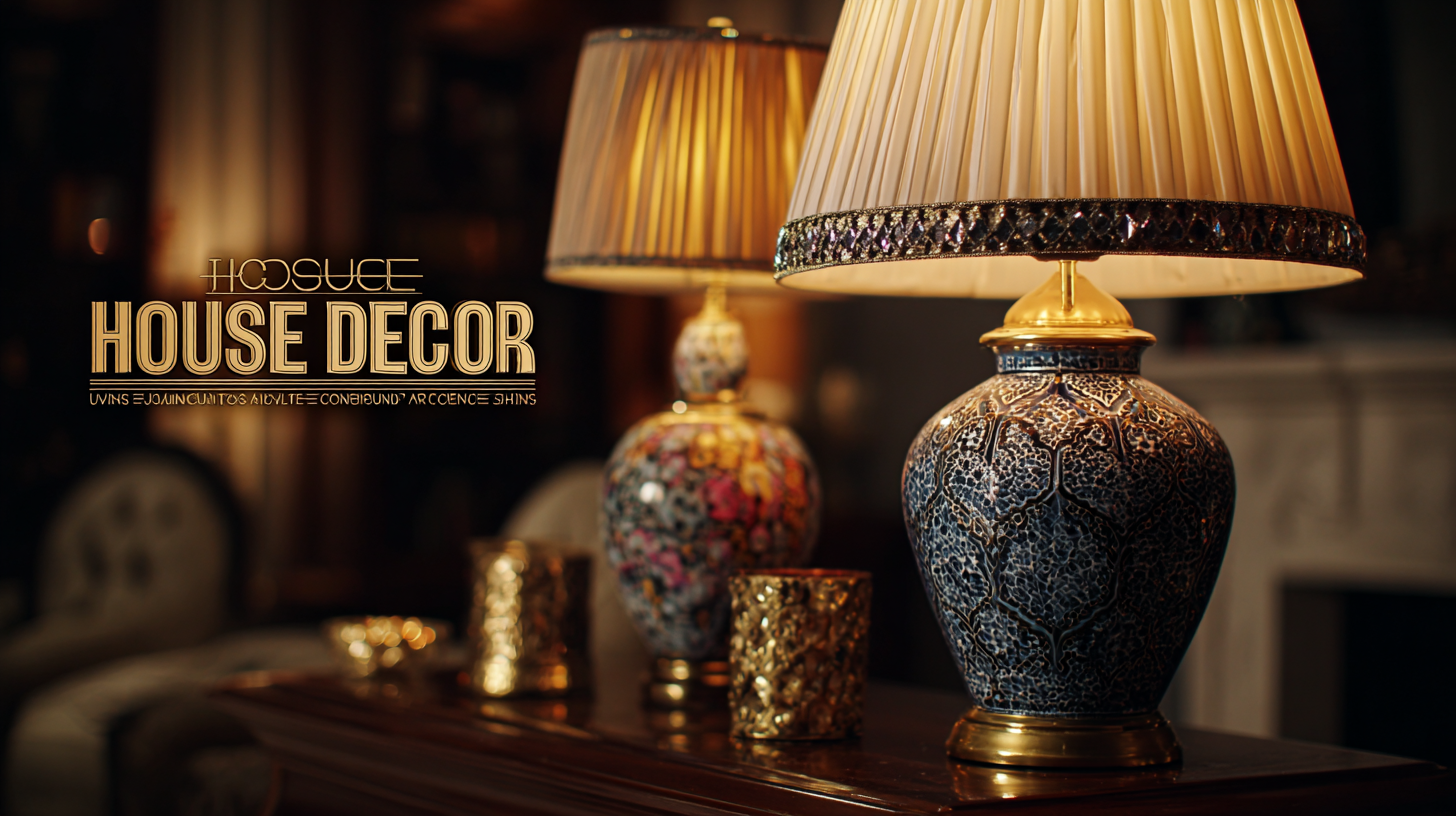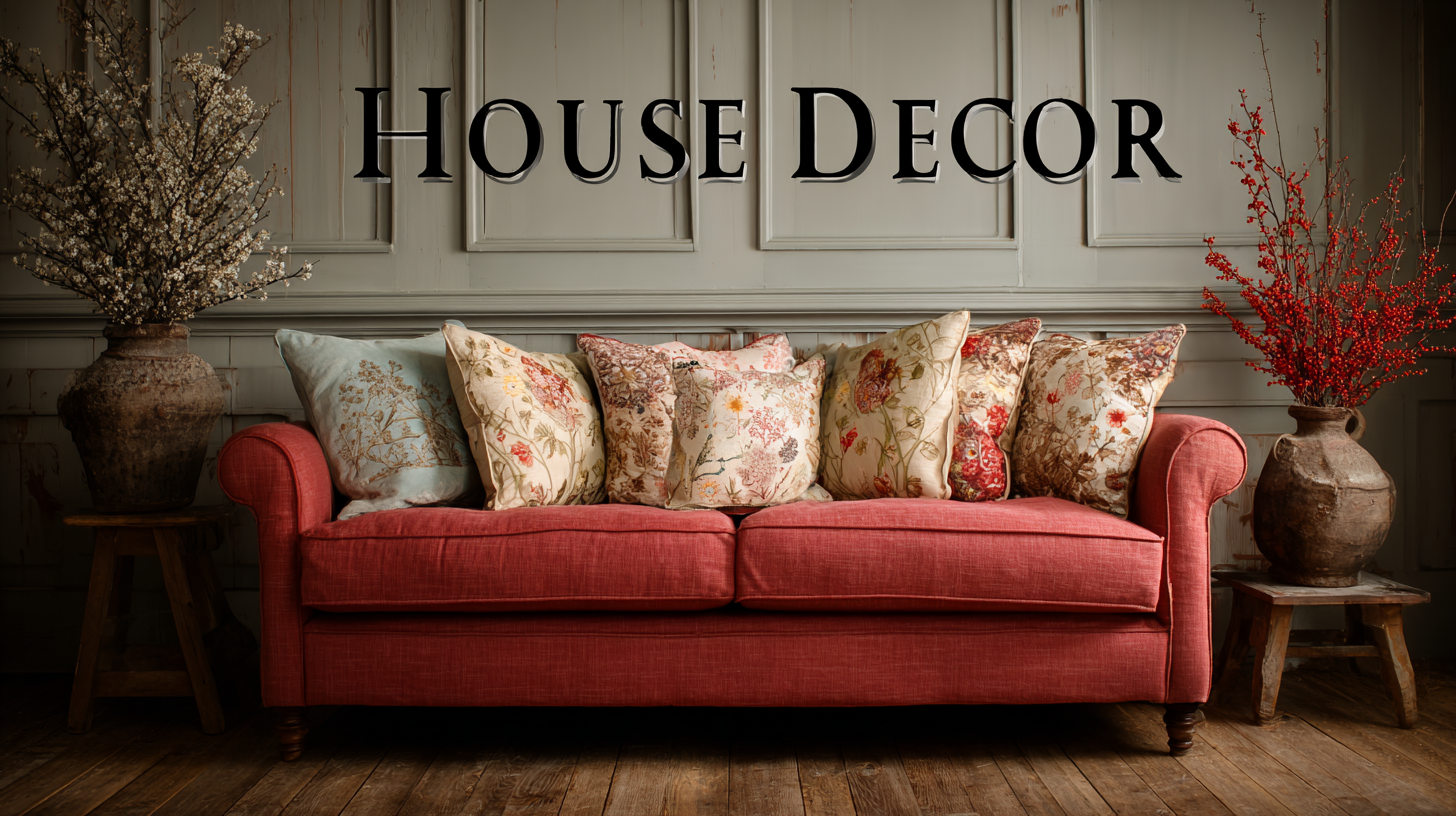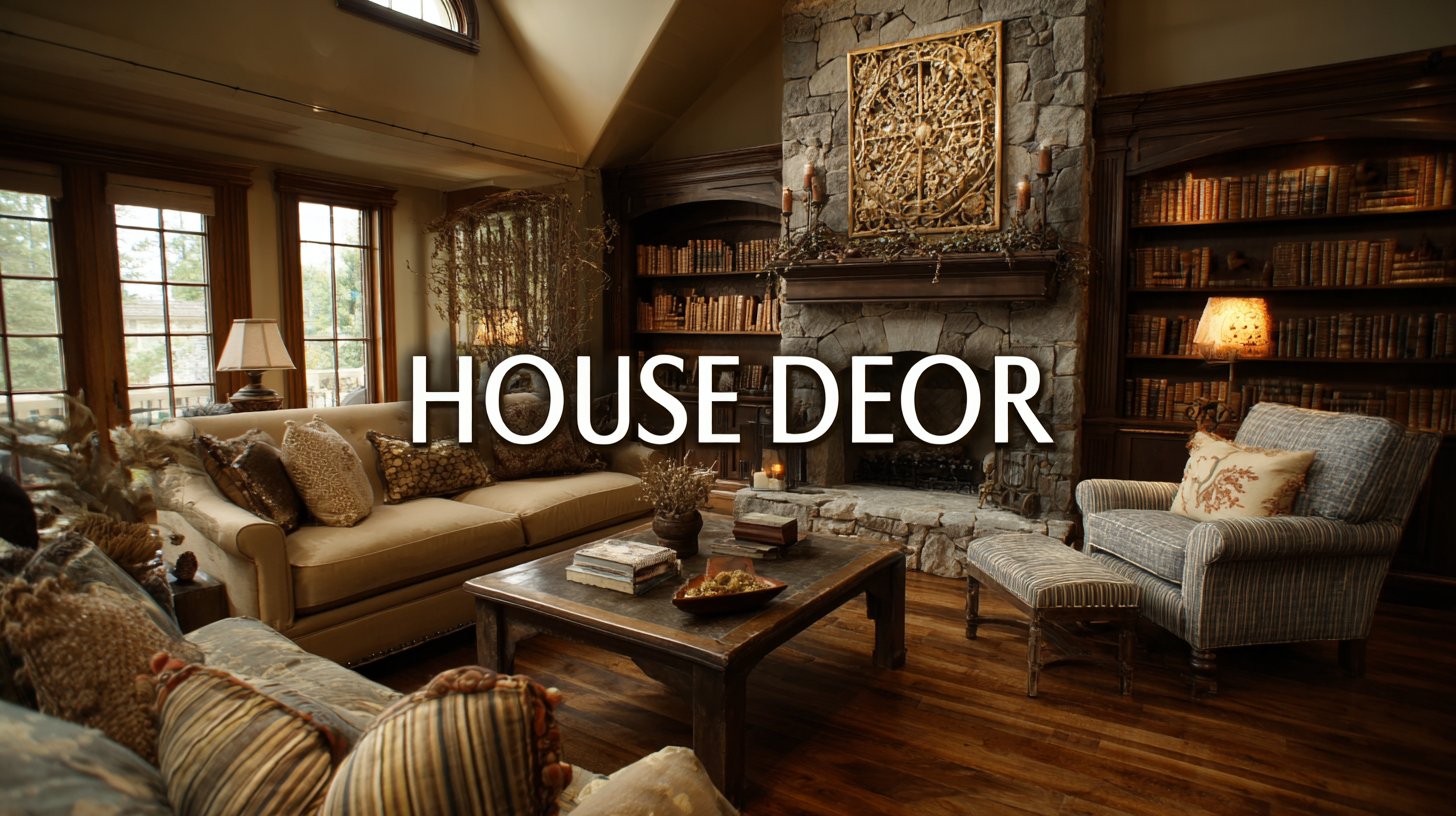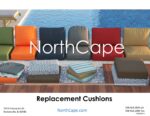Exploring Best House Decor Alternatives for Unique Home Styling Solutions
In today's dynamic interior design landscape, house decor has evolved into a crucial element that reflects personal style and enhances living spaces. According to a recent report by the Joint Center for Housing Studies at Harvard University, home improvement expenditures are projected to reach a staggering $430 billion by 2025, indicating a growing consumer investment in unique styling solutions. This surge in home decor spending reflects a shift towards personalized and distinctive home environments, where homeowners seek alternatives that not only beautify their spaces but also resonate with their individuality.

As trends continue to shift, exploring innovative house decor alternatives can empower homeowners to create an unforgettable ambiance that stands out, ensuring each space tells its own story.
The Importance of Import and Export Certification in House Decor Industry
In the house decor industry, understanding the importance of import and export certification is vital for ensuring the quality and authenticity of products. These certifications not only guarantee that items meet safety and environmental standards but also help businesses navigate complex international trade regulations. For consumers, purchasing certified decor items means investing in high-quality products that are compliant with industry norms, thus elevating the overall decor experience in their homes.
When selecting decor items, consider the following tips: First, always check for certification labels to ensure that the products you buy are responsibly sourced and manufactured. This can protect your investment and contribute to sustainable practices. Second, be aware of the certifications specific to your region or style of decor—whether it’s eco-friendly, handcrafted, or vintage pieces. Lastly, support sellers who prioritize transparent import and export practices, as this fosters a more ethical and informed marketplace.
By embracing certified decor, homeowners not only enhance their unique styling solutions but also contribute to a more responsible and diverse industry. Exploring these alternatives can lead to remarkable findings that resonate with personal aesthetics while promoting integrity in the decor marketplace.
Top Trends Influencing Unique Home Styling Solutions in Today's Market
In today's ever-evolving home decor market, unique styling solutions are more popular than ever. Top trends are shaping how homeowners express their individuality through decor choices. One significant trend is the rise of sustainable materials. Using repurposed or eco-friendly products not only minimizes environmental impact but also adds a distinct character to any space.
Tip: Consider incorporating reclaimed wood furniture or upcycled decor items to infuse your space with personality while maintaining a commitment to sustainability.
Another trend gaining traction is the use of bold colors and patterns. Homeowners are moving away from neutral tones and instead embracing vibrant hues that reflect their personal tastes. This shift allows for creative combinations that can transform a room into a lively focal point.
Tip: Don’t be afraid to mix and match different patterns in textiles or wallpapers. A harmonious blend of colors and designs can create an inviting atmosphere that truly reflects your style.

Alternative Decor Materials: Eco-Friendly Choices for Sustainable Living
In today's world, eco-friendly decor has emerged as an essential choice for sustainable living, allowing homeowners to express their personal style while minimizing their environmental impact. Many traditional decor materials can contribute to carbon footprints and environmental degradation, but alternative materials provide a unique solution. Consider using reclaimed wood for furniture or decorative accents. This not only gives your home a rustic charm but also repurposes materials that would otherwise contribute to waste, showcasing a commitment to environmental responsibility.
Another excellent alternative is bamboo, a fast-growing plant that requires little water and no pesticides. It can be used for everything from flooring to wall art, offering a versatile and durable option. Additionally, organic fabrics like hemp and linen can be utilized for cushions, curtains, and upholstery, ensuring that your textiles are free from harmful chemicals. These eco-friendly choices not only enhance your home’s aesthetics but also promote a healthier lifestyle, allowing you to create a living space that reflects your values and dedication to the planet.
Exploring Best House Decor Alternatives for Unique Home Styling Solutions
| Decor Material | Sustainability Rating | Aesthetic Appeal | Cost Estimate (per unit) | Maintenance Level |
|---|---|---|---|---|
| Recycled Wood | High | Warm and Rustic | $30 | Low |
| Bamboo | Very High | Modern and Elegant | $50 | Medium |
| Recycled Glass | High | Chic and Contemporary | $40 | Low |
| Cork | Medium | Natural and Soft | $25 | Medium |
| Hemp Fabrics | High | Textured and Cozy | $20 | Low |
Analyzing Consumer Preferences for Home Decor: Insights from Recent Surveys
The evolving landscape of home decor preferences amongst consumers presents exciting opportunities for unique styling solutions. Recent surveys reveal a notable shift in consumer behavior, with 82% showing readiness to embrace online shopping for home decor items. This indicates a growing trend towards digital platforms as consumers seek convenience and diverse options to personalize their spaces. The increasing accessibility of ecommerce is reshaping how individuals approach home styling, creating a demand for innovative decor alternatives.
Additionally, the global home decor market is poised for significant growth, with projections indicating a valuation exceeding $203 billion by 2033. As consumers become more discerning, they are increasingly drawn to distinctive design elements that reflect their identities and lifestyles. This trend highlights the importance of understanding consumer sentiments, particularly as factors like economic fluctuations and social influences come into play. In this dynamic environment, brands must prioritize consumer insights to effectively cater to the evolving tastes and preferences of modern shoppers.
How to Navigate Compliance Regulations for House Decor Products Globally
Navigating compliance regulations for house decor products globally can be a daunting task for homeowners and designers alike. Each country has its own set of standards and requirements, and understanding them is crucial for ensuring safety and quality. One of the first steps in this process is to familiarize yourself with international regulations such as the ISO standards or specific local guidelines. This knowledge will not only help you avoid legal complications but also enhance the credibility of your decor choices.
Tips:
1. Research materials: Before purchasing decor items, investigate the materials used. Certain materials may be prohibited or require specific certifications in different regions.
2. Local certifications: Always look for local compliance certifications on products. These indicate that items meet safety and quality standards required in your area.
3. Supplier vetting: When sourcing decor products, choose suppliers who are knowledgeable about regulatory requirements and can provide documentation proving compliance.
By keeping these tips in mind, you can navigate the complex world of house decor regulations with confidence, ensuring that your home remains stylish while adhering to essential safety standards.


 Catalog
Catalog Replacement Cushions
Replacement Cushions New Jersey Catalog
New Jersey Catalog